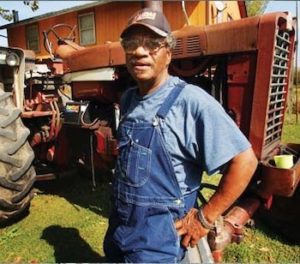
*Black History and American Agriculture are affirmed on this date in 1862. President Abraham Lincoln signed legislation establishing the United States Department of Agriculture on that date.
During the agricultural business's most significant era, when the United States Department of Agriculture (USDA) was created, 90% of the American public were farmers. It was not until almost two decades after its creation that the USDA achieved cabinet status on February 9, 1889. After reconstruction, labor for nothing had evolved into race-based land redistribution and sharecropping. The Federal Farm Loan Act became law in July 1916. This Act sought to respond to farmers' inadequacy of credit at reasonable rates. Little or no thought was given to how credit would be dispensed among farmers' racial, gender, and economic communities, which has proven disastrous.
According to reports dating back to 1965, these problems were found in a discriminatory setting in the USDA, the agency established by the U.S. government to accommodate and assist the unique needs of all farmers and ranchers. Farmers and ranchers are invaluable resources, providing more than enough food and fiber to meet the needs of America, yet they now represent less than 3% of the population. Twenty-two million Americans are employed in processing, selling, and trading the Nation's food and fiber, and 75 million Americans receive USDA benefits.
In North Carolina, there has been a 64% decline in Black farmers in the past 15 years, from 6,996 farms in 1978 to 2,498 in 1992. Following the Pigford v. Glickman case, Native American farmers settled their own USDA discrimination case, the Keepseagle case. It was resolved with two tracks for claims, as in Pigford. Hispanic farmers, known as the Garcia class, and women farmers, the Love class, had also suffered discrimination by the USDA but could not get their class actions certified; both were denied review. However, the USDA employed its administrative claims process to help provide relief to women and Hispanic farmers.
With no real change in discrimination, in 2002, Black farmers staged a sit-in to protest. According to the Government Accountability Office (GAO), as of 2009, problems resolving discrimination complaints at the USDA persisted. USDA employees undermined civil rights claims with inaccurate data. Complaints were not adequately investigated, and decisions were mismanaged and lacked integrity, leading to more discrimination complaints and a surge in backlogged complaints. The USDA's reports on minority participation were useless; strategic planning is limited and lacks needed components. Lessons learned could benefit USDA's civil rights performance: an oversight board could improve management, and an ombudsperson could address the concerns of USDA customers and employees. In April 2009, Tom Vilsack, Secretary of Agriculture, suspended all foreclosures in the Farm Service Agency's loan program for 90 days to provide an opportunity to review loans for discriminatory conduct. Since the USDA's civil rights program expanded, the face of agriculture has changed:
· The number of African American farms increased by 9%; African American farm operators increased by 7%; African American women farmers increased by 53%
· The number of Native American farm operators grew 88%; Native American women farmers grew 318%
· Hispanic farm operators grew 14%; Hispanic women farmers grew 20%
Overall, the number of women farm operators increased by 19%. Women farm operators were the most likely to own the land they farmed and were the most racially diverse.
On April 25, 2013, the New York Times reported that "the $50,000 payouts to black farmers had proved a magnet for fraud" and "its very design encouraged people to lie ."The Federation of Southern Cooperatives/Land Assistance Fund responded with a press release," 'Sharon LaFraniere got it Wrong!' Response to the coverage of the Pigford Settlement in the April 26, New York Times." Susan A. Schneider, a professor of agricultural law, also strongly criticized the New York Times and detailed errors in the inaccurate reporting in this article.
She noted major points: the article "mischaracterized the 'Pigford' settlement, falsely implying that all claimants received payment" (nearly one-third were denied relief); it "fails to explain that in each of the discrimination cases referenced, claimants were required to submit evidence that shows that they experienced discrimination and that they complained about the discrimination." In some cases, such evidence was not available, given the long timeframe of events. Third, the article "implies that discrimination is a pre-1997 problem," but numerous studies through 2008 have documented the persistence of discrimination at USDA.